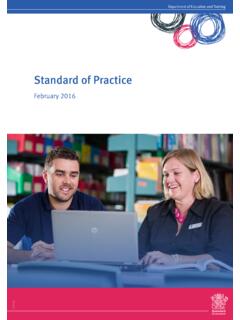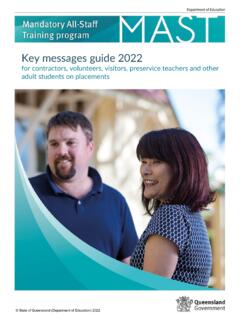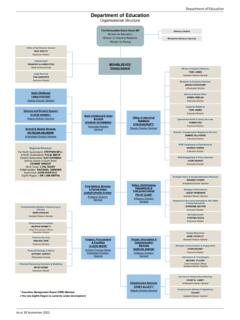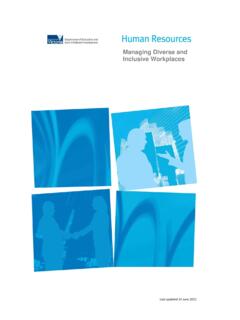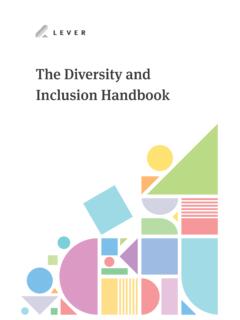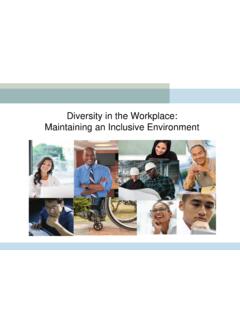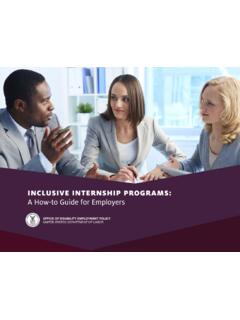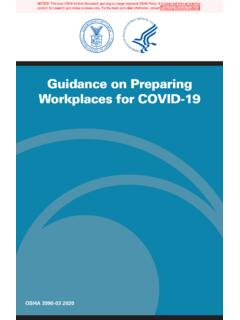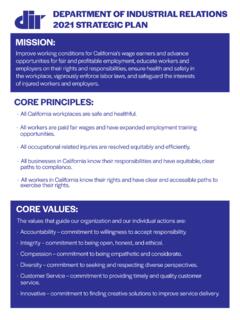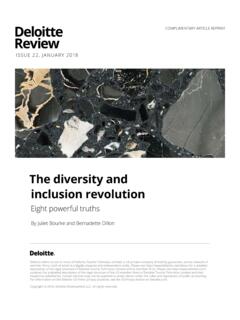Transcription of Inclusive workplaces - Inclusive communication guide
1 Proudly supported byInclusive communication guideContentsInclusive communication guide ..1 Inclusive language ..2 Why do we use particular Inclusive language? ..3 Inclusive interactions ..4 Inclusive decision making ..5 Inclusive meetings ..6 Inclusive events ..7 Inclusive information and design ..9 Inclusive information and design (continued) ..10 Further references ..11 Key sources ..11 Department s communities of inclusion ..11 Inclusive communication guideInclusive communication is effective communication respectful, accurate and Inclusive of all enabling everyone to contribute diverse perspectives and feel like they Inclusive communication guide is a working document developed by the Diversity, Culture and Engagement team to be used by managers, teams and individuals as a guide to building more Inclusive workplace guide is recommended as a learning tool; rather than a set of rules.
2 Purpose of this guide To enable all team members to walk the talk when it comes to Inclusive communication Act as a positive reference guide when policies and documents are updatedWhat is Inclusive communication Inclusive communication is effective communication respectful, accurate, accessible and relevant to all Person centred approach Language, processes and words that are free from stereotypes and biasesWhy is it important workplace culture engagement, productivity, innovation, wellbeing Employer of choice, increased performance, people feel valued, can contribute their perspectives, feel like they belong Promotes respectful relationships Avoids false assumptions, stereotypes and biases that affect fairness of decision making Enables everyone to understand and be understoodApply it widely Team work, presentations, meetings, decision-making, design Departmental documents internal or external When engaging contractors and external organisations When building or using animations, videos, images or other visual content1 Inclusive languagePeople can tend to use non- Inclusive language unwittingly, often not aware that it can exclude.
3 The context and the person you are interacting with can guide your communication . With a growth mindset, we are all learning all the time on how to be Inclusive . If you make a mistake, make it a learning opportunity for next time. Note what might be socially appropriate, may not be appropriate in a work principles: think about the context, focus on the person, listen to the language they use to describe themselves, if in doubt ask the person. Not all people identify with being a man or a woman. People who are gender non-conforming or non-binary may prefer gender neutral pronouns and titles such as they/them/their or Mx All genders instead of both genders or opposite sex Moving away from binary language is more Inclusive of people of all genders everyone or all instead of ladies and gentlemen Chairperson instead of chairman Traditional Custodians Focus on the accessibility or disability barrier, instead of the person s impairment Use person-first language Persons of all abilities , person with <identity low vision, disability>.
4 Person who is <identity deaf or hard of hearing> or person without disability Some people may prefer identity-first language Autistic person . It is important to respect the language people use to describe themselves. Choose to share information about the disability faced and/or impairment rather than disclose Avoid Using social context when at work introductions women in the office or men in the office instead of girls in the office or boys in the office Gendered language use gender-neutral terms such as police officer for professions instead of gender-specific job titles such as policeman/policewoman Victim or objects of pity suffering , struck down , and afflicted Disclosure , declaration of disability , identify as a person with disability Why does Inclusive language matter?
5 The language we choose is vital to enabling everyone in our organisation to feel like they belong. When we use the words that others use to describe themselves, we create a workplace where everyone feels valued and is welcome to be themselves. Remember, whether we intend to or not, the words we choose to use may included or exclude those around us. 2 Inclusive interactionsBuilding Inclusive interactions starts with developing self-awareness of your own blind spots. Research finds that we make judgements about a person s trustworthiness, competence, aggressiveness, likeability and attractiveness within the first 100 milliseconds of seeing a new face (Willis & Todorov, 2006).
6 Beginning with Inclusive listening slows down these snap assumptions, and makes other people feel valued and understood. When listening to others, we tend to assume we understand and we reach conclusions based on our point of view and our biases. Inclusive listening doesn t make assumptions but instead requires actively engaging in critical thinking: noticing and questioning our assumptions and asking open questions. Consider taking the online anonymous Harvard Implicit Association Test to test your blind principles: start with your own blind spots, engage in active listening and open questions. Give someone your full attention when they re talking Ask for the correct pronunciation of an unfamiliar name make an effort to get it right Ask for permission before calling someone by a nickname (and think about who has a nickname and who doesn t and how using nicknames in an office setting can be exclusionary)
7 Acknowledge people when you pass them in the office, not just those in your in-group Provide feedback in a sensitive and caring manner, seeking permission to do so when appropriate Use open questioning to confirm and build on your understanding when you feel like you are making assumptionsAvoid Assuming that acronyms are understood by all Assuming about accents/linking these assumptions to knowledge levels Associating women with warmth and men with competence. Many studies show these gendered assumptions are automatic, stereotypical and held by many according to gendered roles in our society Stereotypical comments or jokes about identity groups Assuming what a person is or is not capable of.
8 If unsure, offer to help, instead of taking over Assuming all people are heterosexual. For example, if asking about a person s personal relationships use the word partner rather than girlfriend/boyfriend/husband/wife Making assumptions around flexible or return to work arrangements Making assumptions about skin colour and cultureWhy do Inclusive interactions matter?Even in situations where you might be trying to express a positive comment, consider if it is based on a stereotype or assumption - such as asking someone where they are from based on their , generalisations or stereotypes create exclusion and can put a negative focus on a person s individual decision makingIn our everyday lives, we make fast and competent decisions, however, fast thinking does not always lead us to make the most effective decisions (Kahneman, 2011).
9 Research shows that well-managed diverse teams tend to outperform homogenous groups, even if the members of the latter group are more capable, due to slowing down thinking by considering different perspectives (Scott, 2008). Inclusive decision making activates diversity to improve innovation, engagement, and results. Key principles: share background and context, share complexities/ considerations, seek diverse perspectives, enable transparency. Ensure the decision making process includes representatives of people who the decision relates to Ask yourself which repeated decisions are the best to start with and gain early wins and which decisions need to start from fresh Assess how often diverse perspectives are directly included in business decision-making processes Actively seek out multiple perspectives (especially those different to your own) Explicitly invite your peers to offer an alternative or dissenting view to avoid confirmation bias (looking for evidence to confirm our own beliefs or judgments and ignoring contradictory evidence)
10 Use a range of communication channels to receive input on a project or idea some team members will be more comfortable providing a follow up email or direct phone call rather than in a team setting Use decision devices such as pros/cons, evaluation sheets, grids to evaluate ideas Ensure others have a say in when/how/where they workAvoid Evaluating the person who is delivering the idea or making the decision; focus on the idea or decision on its merits Making assumptions about the age or ability of people and their experience, That younger people don t have enough experience, and older people are set in their ways Planting ideas or preconceived notions that lead others to a fixed outcome4 Inclusive meetingsInviting diverse views and perspectives to meetings can miss the mark when meetings are not Inclusive ; potentially missing out on valuable input and opportunities those diverse insights lead to.


